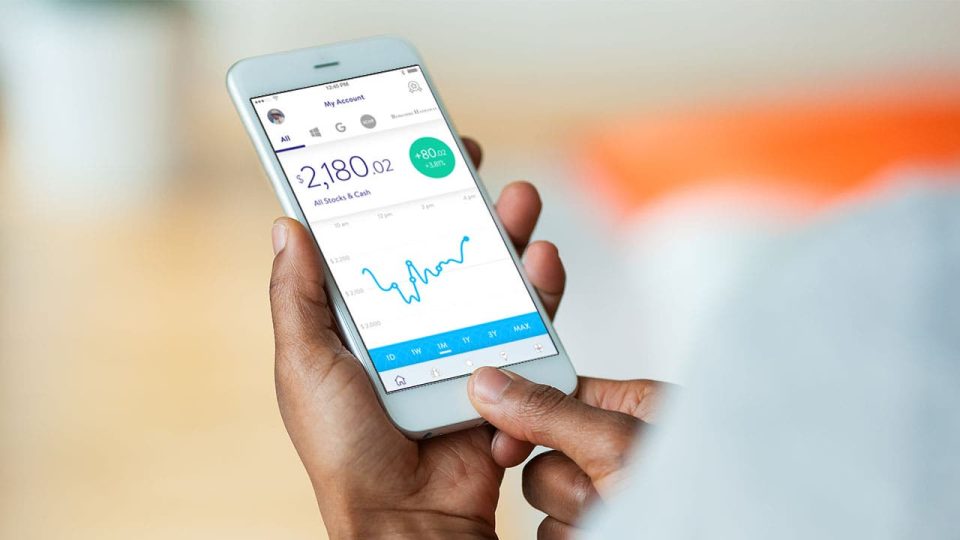Why Selecting the Right Investment App Matters
Starting your investing journey on the proper platform sets the tone for your future success. Without a good foundation, you might get hampered by high fees, limited features, or confusing interfaces. A strong platform ensures that you can:
- Access your account easily and understand your investments
- Benefit from low or no minimums so you can begin even with modest funds
- Utilize educational resources that help you grow beyond “beginner” level
- Maintain flexibility and scale as your investment knowledge and portfolio grow
In short, selecting the right investment apps and platforms allows your strategy to grow in sophistication rather than stagnate at the entry-level.
What to Look for in an Investment App or Platform
Before reviewing specific platforms, it’s vital to understand the criteria that separate a good platform from a mediocre one. These features matter regardless of which app you pick.
Accessibility & Cost Structure
- Low or zero account minimums so new investors can start without large capital.
- Commission-free trades or minimal fees; fees eat into your returns, especially early on.
- Fractional share investing, enabling you to buy “pieces” of expensive stocks if your budget is small.
- Ease of deposits/withdrawals and clear fee disclosures.
Investment Options & Flexibility
- A wide range of investment types (stocks, ETFs, some mutual funds, bonds).
- Options for retirement accounts (IRAs) or tax-advantaged vehicles if you’re thinking long-term.
- Ability to scale up: as you grow, you’ll want more advanced features.
User Experience & Learning Resources
- A userfriendly mobile app and/or web interface, so you’re not stuck in a clunky system.
- Educational content: tutorials, market insights, learning modules.
- Tools like automatic investing, recurring deposits, and portfolio tracking to support your long-term habits.
Safety & Regulation
- Registered with the appropriate regulators; your funds must be safe.
- Clear policies on data security, withdrawals, and brokerage protection.
- Transparent about liquidity and risks.
Growth Potential
- The platform should allow you to move from beginner to intermediate without forcing you out.
- Features like rebalancing, investment analytics, tax-smart tools come in handy for long-term usage.
Major Platforms for Beginners
Below are detailed profiles of specific apps and platforms worth serious consideration by new investors. For each, I’ll highlight the key strengths, possible limitations, and what type of beginner they best serve.
1. Acorns
Acorns simplifies investing by automating much of the process. Round-ups, automatic deposits, and pre-built portfolios are key features. According to the platform, users can invest spare change every time they swipe a linked card.
Strengths:
- Very low barrier to entry; you can begin with minimal funds.
- Automated approach means less need to pick individual stocks or funds.
- Built for long-term mindset; integrates retirement accounts and kids’ accounts.
- Good choice if you prefer “set it and forget it.”
Limitations:
- Less flexibility if you want to pick individual stocks or build a custom portfolio.
- Automatic features may reduce your engagement in understanding what you own.
- There is a monthly fee-tier depending on your level of service (so read the fine print).
Best for: Beginners who want a handsoff approach, minimal investment amount, and automatic habits.
2. Stash
Stash is designed with new investors in mind, offering fractional shares, themed investment options, and guided decisions.
Strengths:
- You can invest small amounts, including fractional shares, making it accessible.
- Guided themes (for example, “Clean Energy” or “Women Who Lead”) make investing relatable.
- Supports retirement accounts and custodial accounts (helpful if you’re investing for kids or family).
Limitations:
- Monthly subscription fee might be a consideration for very small portfolios.
- The guided themes can be appealing, but you still need to understand underlying risks.
- Might not be as advanced for higher-level investing needs (though acceptable for scaling).
Best for: Beginners who want to engage with their investments, pick themes, and learn the basics with small amounts.
3. Robinhood
Robinhood is widely known as a commission-free trading app. It appeals to new investors because of its simplicity and low turnaround
Strengths:
- Zero commission stock trades make it cost-effective.
- Fractional shares means you can invest small amounts in expensive stocks.
- Clean mobile interface and quick setup; good for mobile-first users.
Limitations:
- The simplicity means fewer educational resources in comparison to some more investment-centered platforms.
- Because of the ease and “fun” interface, there is a risk of treating investing like a game rather than a long-term commitment.
- Some other platforms provide more robust features for diversification and long-term strategy.
Best for: Beginners who want ease of use, mobile convenience, and want to get started immediately with trading stocks and ETFs.
4. Charles Schwab / Schwab Intelligent Portfolios
Charles Schwab’s platform offers both beginner-friendly access and room to grow. According to recent listings, Schwab is recommended for beginners who also value long-term investing and portfolio diversification.
Strengths:
- No account minimums for general brokerage, access to fractional shares, and many asset options (stocks, ETFs, bonds).
- Strong educational resources, research tools and client service.
- Allows for robo-advisor service (Schwab Intelligent Portfolios) if you prefer automatic management.
Limitations:
- While user-friendly, it can still feel complex because of the wide range of size and features.
- For very small portfolios you may not need all features today, but it gives room to grow.
- As with any platform, you have to monitor costs and avoid reliance only on “auto” features without understanding what’s happening.
Best for: Beginners who plan to stay invested long term, want access to robust tools, and anticipate growing their portfolio and knowledge.
5. Webull
Webull is another platform that supports beginners but also offers more advanced trading tools. SmartAsset lists it among the best for beginners thanks to its low minimums and fractional shares.
Strengths:
- $0 commission for many trades and supports fractional shares starting as low as $1.
- Offers advanced charting and tools, which can be useful as you gain experience.
- Good selection of stocks, ETFs and options (if you choose to explore further).
Limitations:
- The advanced features may overwhelm complete novices initially.
- While educational resources exist, the focus is more on trading features than guided investing.
- If you want “auto-piloted” investing, there may be simpler choices.
Best for: Beginners who are comfortable with a bit of a learning curve and expect to engage actively (not purely passive investing) and want to scale into more advanced features.
Choosing the Right Platform for You
Selecting among these platforms isn’t just about picking the “best” listed; it’s about finding your fit. Here are questions to ask yourself:
- What is my investment goal? Are you investing for retirement (long term), saving for a mid-term target, or simply experimenting?
- How much time will I devote to investing? Do you want to automate most decisions or select your own stocks and funds?
- What is my budget? If you have only modest funds, focus on platforms with low minimums and fractional shares.
- What level of support and education do I need? If you’re totally new, you may prefer heavy educational content; if you already know a bit, you might want more advanced tools.
- Am I comfortable growing beyond “beginner” features? You might choose a platform that allows you to scale without switching later.
- How will I keep costs low and invest with discipline? Platform fees, account minimums, and investing habits matter.
Best Practices After Choosing Your Platform
Having selected a platform is just the first step. To make it truly effective, follow these best practices:
Set Up Automatic Investing
Whenever possible, set recurring deposits—even modest amounts. This supports consistency and takes emotion out of timing decisions.
- Decide on a monthly (or bi-weekly) amount that you can sustain.
- Link your account to your budget so it becomes part of your regular financial routine.
- If your platform supports “auto-invest” or “round-ups” (like Acorns or Stash), consider enabling them.
Diversify Early
Even with a beginner budget, diversification matters. Use ETFs or index funds when available within your platform.
- Avoid putting all your funds into a single stock even if the price is low.
- If your app offers pre-built portfolios or robo-advisor services, consider them for initial diversification.
- Monitor your allocation periodically (e.g., once a year) to ensure you’re not overly concentrated.
Educate Yourself
Rather than relying solely on the platform’s “easy mode,” commit to learning the principles of investing: risk, returns, compounding, fees.
- Use the educational resources in your app (video tutorials, articles).
- Read broadly: books or articles about investing strategy, not just how to use the app.
- Practice patience and long-term thinking: investing isn’t a sprint, it’s a journey.
Monitor Fees and Account Growth
- Understand the fee structure: monthly fees, trade commissions, withdrawal fees, inactivity fees.
- As your portfolio grows, ensure you’re not paying disproportionately high fees relative to your investment.
- Review your account at least annually to ensure it still meets your needs and you’re not better off moving to a more advanced plan or platform.
Grow Your Comfort Level
Over time, you’ll likely want to move from simple to more advanced features—e.g., from automatic portfolios to self-directed investing, from stocks + ETFs to bonds, real estate, international exposure.
- Check if your app supports expansion.
- Take small steps: e.g., allocate a small portion of your portfolio to a new asset class.
- Avoid jumping into complex products without understanding them.
FAQs
Q: What is the best minimum investment amount when using investment apps and platforms?
It varies by app, but many modern beginner-friendly platforms allow you to start with very low amounts—even less than $100. The most important factor is consistency: if you can invest, say, $50 per month and keep that up, it can build significantly over time.
Q: Can I switch platforms later if my needs change?
Yes. Most investing apps allow you to transfer your portfolio or close your account and open a new one. But switching may incur some steps or costs. That’s why choosing a platform with growth potential (scalability) is beneficial.
Q: Are the “free” investing apps really free?
Many offer commission-free trades, but you should still watch for other costs: subscription tiers, fees for certain account types, or costs embedded in funds. Always review the fee schedule.
Q: Should I pick the platform first or learn investing principles first?
Ideally both. Learning investing principles helps you use the platform wisely. Picking the platform and then using it while you learn is a practical approach. The key is ensuring the platform supports your goals and budget.
Q: How do I decide between doing everything myself versus using automatic portfolios?
Use automatic portfolios (or robo-advisors) if you prefer a low maintenance, set-it-and-forget-it style. Choose self-directed investing if you want to pick individual stocks, dive into funds, and actively manage your portfolio. Many beginners start with automatic and shift to self-directed as they gain confidence.
Q: How often should I review my investment platform and account?
At least once a year, plus any time your financial situation changes meaningfully (job change, major expense, inheritance, etc.). During the review check your fees, portfolio performance, platform usability, and whether the platform still meets your evolving goals.
Closing Thoughts
The right “investment apps and platforms” for beginners provide more than just access—they provide a foundation on which you can build sustainable habits, scale your knowledge, and grow your portfolio thoughtfully. By choosing a platform that aligns with your budget, commitment level, and long-term goals, and by using it alongside smart practices like automation, diversification, and education, you’re setting yourself up for success. Begin with the basics, but plan for growth. Your platform should serve you today and support you tomorrow. Stay consistent, stay informed, and let your investments work for you.

